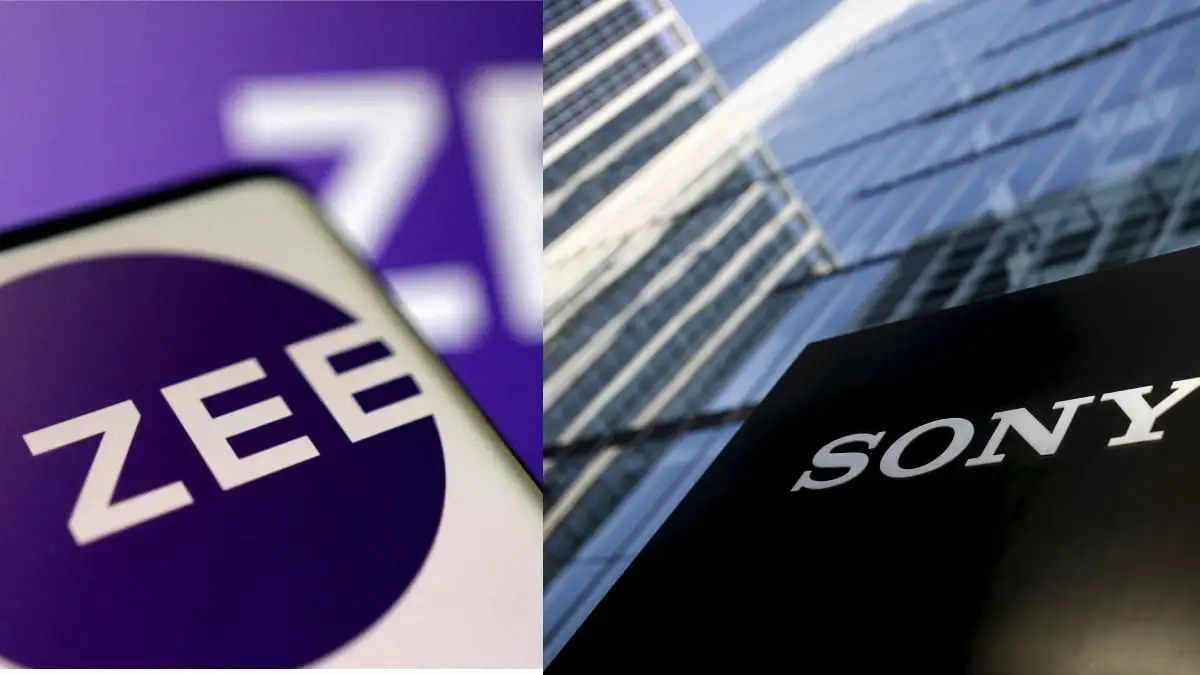Sony Group thought it had a strong script to woo audiences in the world’s most-populous nation, but the merger that was going to make it the leader of India’s television entertainment market was doomed from the start. By pursuing it for almost two years, the Japanese company has become an unwitting actor in a farce. It should cut its losses and walk.
The Securities and Exchange Board of India alleged last week that Zee Entertainment Enterprises Ltd., the Mumbai-based media house Sony wants to combine with, had faked the recovery of loans owed by its founder Subhash Chandra’s private entities. He and his son Punit Goenka had siphoned off funds “for their own benefit,” the SEBI said, barring them from executive or directorial positions in listed firms. Chandra and Goenka, Zee’s chief executive, have appealed the order on the grounds that the regulator didn’t hear their side of the story. The SEBI has doubled down by filing a 197-page reply.
The legal drama creates a fresh problem for Sony. Although it was supposed to control the larger empire, and infuse an additional $1.4 billion of cash, Goenka was to run the show. This is how Chandra, the 72-year-old Indian media mogul, had structured the 2021 transaction so as to retain some sway over Zee, India’s oldest non-state television network.
Chandra had come to that sorry pass because of his wrong-way leveraged bets in unrelated industries like infrastructure, an error he acknowledged in early 2019. But a plan to repay the debt by selling half of the family’s stake in Zee to a strategic partner failed to kick off. Two years later, a large US investor began a campaign to oust his son as director. At the time, Sony, which competes with Zee in offering a similar fare of Bollywood-style entertainment and sports, was kind to come to the rescue of its rival. Not only was it agreeable to letting Goenka continue as CEO, Sony was also giving the family an option to raise its near-depleted stake to 20 persent and throw in extra shares as a non-compete fee.
The television market in India is large, but its best days are in the rear-view mirror. So although the Zee network reaches 750 million people, or six times Japan’s population, every week, its market share of 16.6% percent stagnant. The more promising horse in the stable is ZEE5, the streaming service. It has 114 million monthly active users, and posted a 35 percent jump in sales in the financial year that ended in March. The overall revenue for the company, however, didn’t grow. With programming costs on the rise and advertising in a slump, Ebitda crashed by 38 percent.
Too much has changed in India in the past two years for Sony to still want the merger on the same terms — or want it at all.
Last June, Viacom18 Media a joint venture between Mukesh Ambani’s Reliance Industries and Paramount Global, spent $2.7 billion (roughly Rs. 2,22,000 core) to win an exclusive, five-year live-streaming deal for Indian Premier League cricket matches. Ambani decided to show this year’s tournament for free, and then went on to sign a pact with Warner Bros Discovery to stream the latter’s exclusive content in India, including the popular series, Succession. Ambani’s petrochemicals-heavy group, which is pivoting toward consumer businesses like telecom, retail, digital content and e-commerce, has already become a formidable media player.
If the deal with Sony falls through, Zee would rue not having sold to Ambani shortly before the hastily cobbled bailout by Sony. Back then, Atlanta-based Invesco Developing Markets Fund was trying to use its then- 88 pecent stake in Zee to get CEO Goenka to discuss a potential transaction with Reliance. Those talks went nowhere because a complete exit for the Chandra family would have been an almost certain outcome — Ambani and Manoj Modi, his consigliere, wouldn’t have been as generous to the father-son duo as Sony has turned out to be.
Investors have already lost their enthusiasm. Zee shares are down 50 percent from their high following the September 2021 merger announcement. If the Japanese side sours on the deal now, creditors will most likely make fresh attempts to drag the Indian media house into bankruptcy. Although one such request was turned down by the insolvency tribunal just last month, the SEBI’s interim order has altered the landscape. Sony gets nothing by waiting for regulators’ allegations to do the rounds of the securities appellate tribunal and possibly India’s Supreme Court.
The troubled company had about $100 million (roughly Rs. 820 core) of cash in March, but it’s sitting on nearly $1 billion (roughly Rs. 8,200 core) worth of inventory, including movie and music rights and advances. That content and loyal audiences — Zee Music has 134 million YouTube subscribers — are lucrative enough to set off a bidding war for its assets. In trying to preempt such a contest with Ambani, Sony has wasted nearly two years. It’s time to end the farce.
© Thomson Reuters 2023
(This story has not been edited by NDTV staff and is auto-generated from a syndicated feed.)
Source link











Leave a Reply